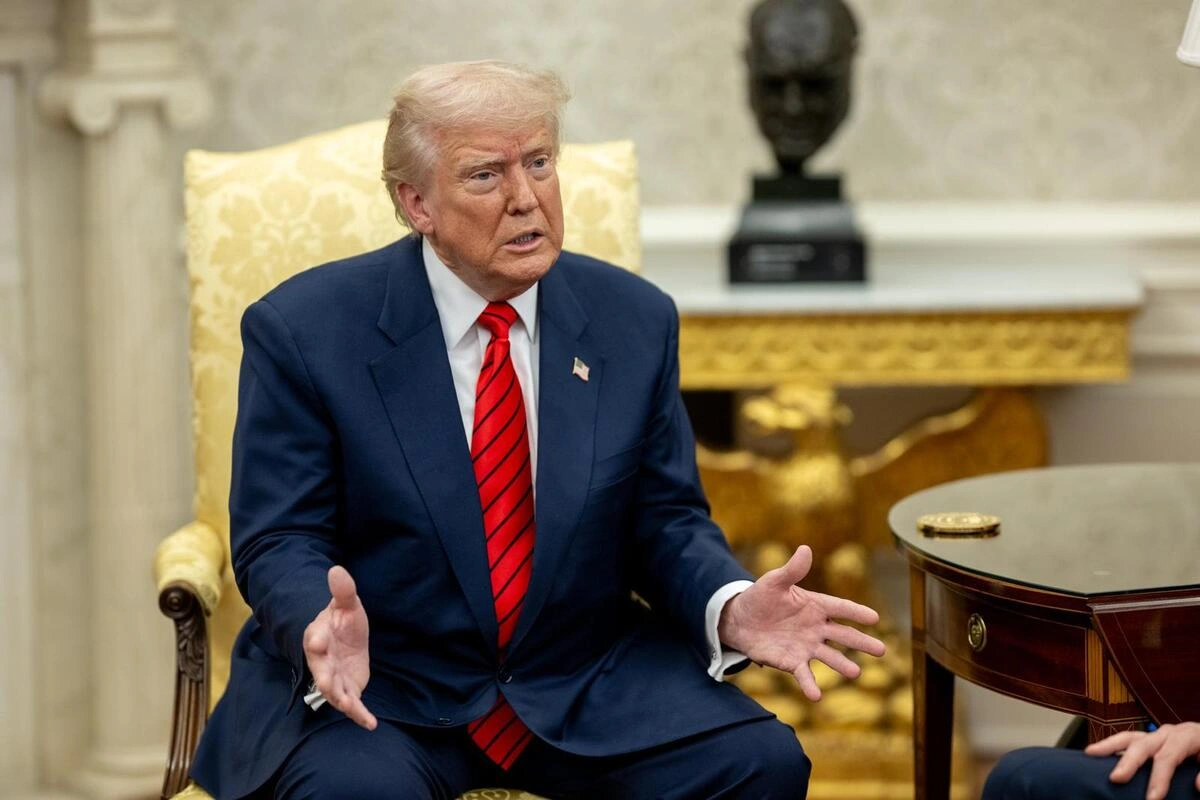By Gary Sambrook
On March 12, 2025, the Trump administration dropped a trade bombshell: 25% tariffs on all steel and aluminium imports, reigniting a familiar transatlantic tussle. For UK businesses, this move is a double-edged sword – promising opportunities for some, headaches for others – caught between the United States’ preference for speed and swagger and the European Union’s methodical, consensus-driven riposte. The contrast between these two systems reveals not just differing philosophies but also how their tempos could reshape British commerce in a world of escalating trade wars.
The US: fast moves, big waves
The US system is built for velocity. Under Section 232 of the Trade Expansion Act, President Trump wields near-unilateral power to slap tariffs on imports deemed a “national security threat” – a term so elastic it could stretch from steel beams to Swiss cheese. The Department of Commerce runs an investigation, takes some industry input, and hands the President a recommendation. From there, it’s his call, no Congressional sign-off required. Within days of Trump’s announcement, the tariffs were live, sending shockwaves through global markets. Consultation? Minimal. Diplomacy? Optional. The goal is disruption – making waves to force allies and adversaries alike to the negotiating table.
For UK businesses, this speed spells uncertainty. Steel exporters like Tata Steel, with its Port Talbot plant already battered by global competition, now face a steep U.S. tariff wall. British manufacturers of cars, machinery, or aerospace parts—think Jaguar Land Rover or Rolls-Royce – relying on American aluminium imports will see costs spike overnight. The US market, a £4 billion destination for UK steel and aluminium, just got pricier to crack. Yet there’s a flip side: UK firms less tied to transatlantic supply chains, like those in services or domestic manufacturing, might dodge the storm—or even gain if Trump’s “America First” push drives U.S. buyers to seek non-EU, non-tariffed suppliers like Britain.
The EU: slow burn, steady hand
Contrast this with the EU’s response, a masterclass in deliberation. When the European Commission announced €26 billion in retaliatory tariffs on U.S. goods on March 12, it split the counterpunch into two phases: a quick jab on April 1 with €8 billion targeting bourbon and Harleys, followed by a mid-April haymaker hitting €18 billion more in American exports. Why the delay? The EU must consult member states via the Trade Policy Committee, industry stakeholders, even the WTO for compliance. It’s a slower fuse, designed to balance German automakers’ needs with Irish farmers’ fears, ensuring unity across 27 nations. The result? A measured, proportionate strike, but one that lacks the US’s immediacy.
For the UK, this lag offers breathing room but also risks. British firms exporting to the EU – still our largest trading partner at 42% of goods – won’t feel an immediate pinch from EU countermeasures. However, as U.S. goods like poultry or steel face EU duties, American exporters might redirect their wares to the UK, flooding markets and undercutting local producers. A British poultry farmer in Kent or a steel fabricator in Sheffield could find themselves squeezed by cheaper US imports rerouted from a tariff-hit Europe. Conversely, UK exporters of luxury goods or machinery might cheer if EU tariffs make American rivals less competitive on the continent.
UK Business: caught in the middle
The UK, post-Brexit and charting its own trade course, sits uncomfortably between these giants. Trump’s tariffs could nudge British firms toward domestic or Commonwealth markets – Australia and Canada, notably, are mulling their own responses – but the US’s speed leaves little time to pivot. The EU’s slower retaliation, while predictable, risks dragging the UK into a broader trade chill if American firms dump goods here to offset losses. Small businesses, already stretched by inflation, might buckle under higher input costs; larger ones, like BAE Systems with its US ties, might lean harder into lobbying for exemptions.
Two systems, one lesson
The US thrives on making waves – fast, loud, and unapologetic. It’s a system that bets on chaos to reset the board, forcing others to react. The EU, tethered to consultation, opts for stability over speed, a collective shield against rash moves. For UK businesses, neither approach is inherently “better” – each brings pain and promise. The lesson? Adaptability is king. Trump’s tariffs may hit like a sledgehammer, but the EU’s slow grind can wear down just as surely. Britain, outside the EU’s huddle and exposed to America’s whims, must move faster than both – consulting less, perhaps, but strategising more – to stay afloat in this transatlantic tempest.







